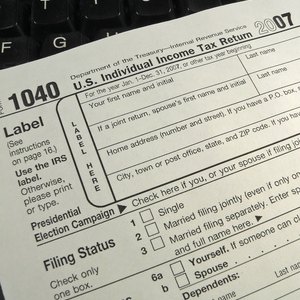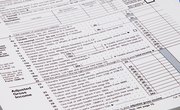
If you want to change your W-2 status, you must do so by filling out another form and giving it to your employer. You may want to change it based on whether you receive a refund from the IRS or you owed them money.
Tips
You can use IRS Form W-4 to ensure that your W-2 accurately reflects your current financial status and the number of withholdings allowances you wish to claim for your regular paycheck. You should always update your W-2 status to reflect your most recent financial circumstances in order to ensure that you are prepared to manage your year-end taxes responsibly.
Navigating the W-2 Form
The W-2 form is your Wage and Tax Statement, and your employer must file it with the IRS. A W-2 form is necessary for any employee that had income taxes, Medicare taxes and Social Security taxes withheld. It’s also necessary if the employee would have had income tax withheld had they not claimed more than one withholding allowance on the W-4 form, known as the Employee Withholding Allowance Certificate. It’s the W-4 form you must use to change your W-2 status. The IRS recommends reviewing your withholding allowances annually and making necessary adjustments. If you received a big tax refund, you may want to change the withholding allowances on your W-4. A large tax refund generally means too much tax was taken out of your paycheck and you were, in effect, giving the government an interest-free loan. Similarly, if you owe money to the IRS and the primary reason is that too little money was taken out of your paycheck for this purpose, you may want to remove some withholding allowances. The IRS offers a withholding calculator to help you determine the correct amount of allowances.
Changing Dependents on the W-2 Form
To change the number of dependents on your W-2 form, you must first change the number on the W-4. The fewer the number of dependents or other allowances you claim, the more money is withheld from your paycheck, and vice versa. Much depends on your marital status, the number of jobs you have and whether you have children. If you have kids, you can claim an allowance for each child, and if you’re married, you can claim two allowances for you and your spouse. If you are single and don’t have kids, you may want to claim tax withholding allowances of 0 or 1. You can claim 0 allowances if you are a dependent on someone else’s tax return, which may prove the case when a college student is claimed on her parent’s tax returns. You may also want to claim 0 allowances if you had a complete refund the previous year of all federal tax withheld from your paycheck because you had no tax liability and expect the same to occur in this tax year.
Along with dependents, you may want to adjust your withholding whenever you experience a major life event. Besides the birth of a child, these may include marriage, divorce, buying a home, getting a new job and/or a pay raise and any type of major financial gain, such as a lottery win or inheritance. With an inheritance, you aren’t taxed on the money you inherited in most states, but you will have to pay income taxes on your dividends, interest and capital gains.
Reviewing Your W-4 for 2018
The Tax Cuts and Jobs Act, signed into law on Dec. 22, 2017, made huge changes to the tax code. For 2018, it is worthwhile for every employee to review their withholdings and adjust them accordingly. The personal exemption no longer exists under the new tax law, but the standard deduction has been raised to $12,000 for single filers and $24,000 for those married and filing jointly. Tax brackets have also changed, and many people will find themselves in a lower tax bracket than in previous years. The IRS especially recommends a withholding review for two-income couples, those who itemized deductions in 2017, individuals with multiple jobs, those with dependents over the age of 17 and high-income earners with complicated tax returns.
Understanding W-4 Allowances for 2017
For 2017, each withholding allowance claimed on your W-4 reduced your taxable income by $4,050. Unfortunately, you can't change your withholding allowances retroactively.
References
- eFile: How Do I Adjust My W4 IRS Paycheck Tax Withholding?
- IRS: About Form W-2, Wage and Tax Statement
- Does My Child/Dependent Qualify for the Child Tax Credit or the Credit for Other Dependents? | Internal Revenue Service
- IRS: Tax Withholding for Individuals
- Internal Revenue Service. "Topic No. 753 Form W-4 – Employee's Withholding Certificate." Accessed Sept. 22, 2020.
Writer Bio
A graduate of New York University, Jane Meggitt's work has appeared in dozens of publications, including Sapling, Zack's, Financial Advisor, nj.com, LegalZoom and The Nest.

